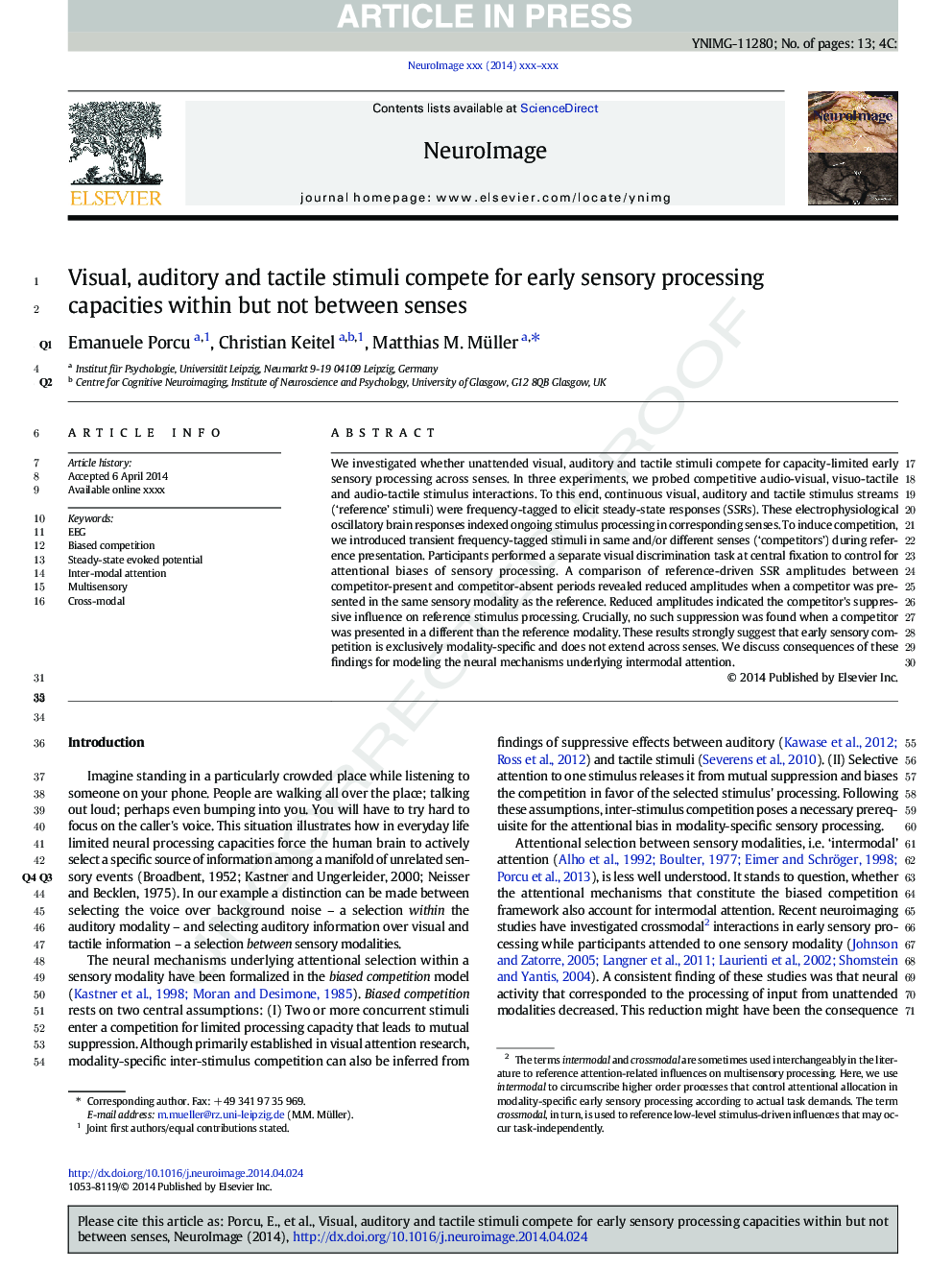| Article ID | Journal | Published Year | Pages | File Type |
|---|---|---|---|---|
| 6027281 | NeuroImage | 2014 | 13 Pages |
Abstract
We investigated whether unattended visual, auditory and tactile stimuli compete for capacity-limited early sensory processing across senses. In three experiments, we probed competitive audio-visual, visuo-tactile and audio-tactile stimulus interactions. To this end, continuous visual, auditory and tactile stimulus streams ('reference' stimuli) were frequency-tagged to elicit steady-state responses (SSRs). These electrophysiological oscillatory brain responses indexed ongoing stimulus processing in corresponding senses. To induce competition, we introduced transient frequency-tagged stimuli in same and/or different senses ('competitors') during reference presentation. Participants performed a separate visual discrimination task at central fixation to control for attentional biases of sensory processing. A comparison of reference-driven SSR amplitudes between competitor-present and competitor-absent periods revealed reduced amplitudes when a competitor was presented in the same sensory modality as the reference. Reduced amplitudes indicated the competitor's suppressive influence on reference stimulus processing. Crucially, no such suppression was found when a competitor was presented in a different than the reference modality. These results strongly suggest that early sensory competition is exclusively modality-specific and does not extend across senses. We discuss consequences of these findings for modeling the neural mechanisms underlying intermodal attention.
Related Topics
Life Sciences
Neuroscience
Cognitive Neuroscience
Authors
Emanuele Porcu, Christian Keitel, Matthias M. Müller,
